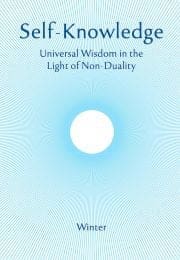Japanese Spiritual Poetry – Dogen
(Eihei Dogen lived from 1200 to 1253. He is one of the great figures in the spiritual history of Japan, and generally regarded as the founder of the Soto sect of Zen Buddhism, with its focus on meditation.)
By Dogen’s time, the Japanese love of poetry had penetrated far beyond the courtly and educated circles, and the art was appreciated by people in all walks of life, coupled with their love of nature. Daisetz Suzuki, in his essay ‘Zen Buddhism and the Japanese love of nature’, dwells on an anecdote about the Monk Saigyo (1118-1190), one of the revered early poets of Japan, a devout Buddhist who lived, for the most part, a wandering life.
One evening when Saigyo needed shelter, he came across a small dilapidated cottage occupied by an elderly couple. He asked to stay the night. The husband refused on the grounds that there was a gaping hole in the roof, and such imperfect hospitality was unworthy of their guest. The wife felt that Saigyo, being a man of religion, should be accommodated.
Saigyo said: ‘Why don’t you mend the hole?’ The husband replied: ‘It’s not as easy as that. It is now autumn, and my wife loves the radiance caused by the moonlight pouring in through the roof. On the other hand, I would like to have the cottage properly covered because I love the sound of the light autumn rain pitter-pattering on the thatch.’
Saigyo accepted this unconventional attitude to home repair. Then he heard the old man say: ‘Our humble hut—is it to be thatched or not to be thatched?’ Saigyo said: ‘A fine poem in the making!’ ‘Complete it,’ urged the wife, ‘and you can stay the night whatever our situation!’
This is the story behind Saigyo’s poem:
Is the moonlight to leak,
Are the showers to patter?
Our thoughts are divided.
Our humble hut—
Is it to be thatched or not to be thatched?
This illustrates the love of nature without the desire to conquer it; to appreciate its beauty and variety, and to tolerate what some would see as its more inconvenient manifestations, such as rain, cold weather or excessive heat. And this acceptance of nature as it is, was taught by Basho, the seventeenth-century master of haiku, who felt it was the true spirit of all art. He wrote:
Saigyo in traditional poetry....and indeed all who have achieved real excellence in any art, possess one thing in common, that is, a mind to obey nature, to be one with nature throughout the four seasons of the year. Whatever such a mind sees is a flower, whatever such a mind dreams of is the moon. It is only a barbarous mind that sees other than a flower, merely an animal mind that dreams of other than the moon. The first duty of the artist is, therefore, to learn how to overcome such barbarism and animality, to follow nature, to be one with nature.
Eihei Dogen shared this simple refinement, and has left several poems, both in Chinese and Japanese, that give expression to it. Though the Soto branch of Zen emerged out of Dogen’s teaching, it has to be said that he was not interested in founding any sect in his lifetime, and this attribution came after his death.
Buddhism has much in common with Adhyatma Yoga. Both teach that our purpose in life is spiritual illumination. Both hold that this enlightenment is to be uncovered in our own being. The supreme realisation, in both Buddhism and Yoga, is facilitated by the stilling of the mind and a life of benevolence and harmlessness. Both teach that enlightenment involves transcendence of the individual ego—the self.
For Buddha what remains after this transcendence is infinite, nameless, metaphysically self-less—without a self. For Yoga what remains when our little self is transcended is the true Self—also infinite and nameless. The yogis think it helpful to keep this word ‘self’, but in a higher sense. The Buddhists do not think it helpful to use the word ‘self’ because of its personal associations. But the great reality realised by the enlightened ones of both schools is one and the same, and the identification of ultimate reality with our original ‘self’ is signified in many of the Zen writings.
Subscribe or enrol for free guest access to read all of this article and Self-Knowledge online.
Already subscribed or enrolled? Log in:


